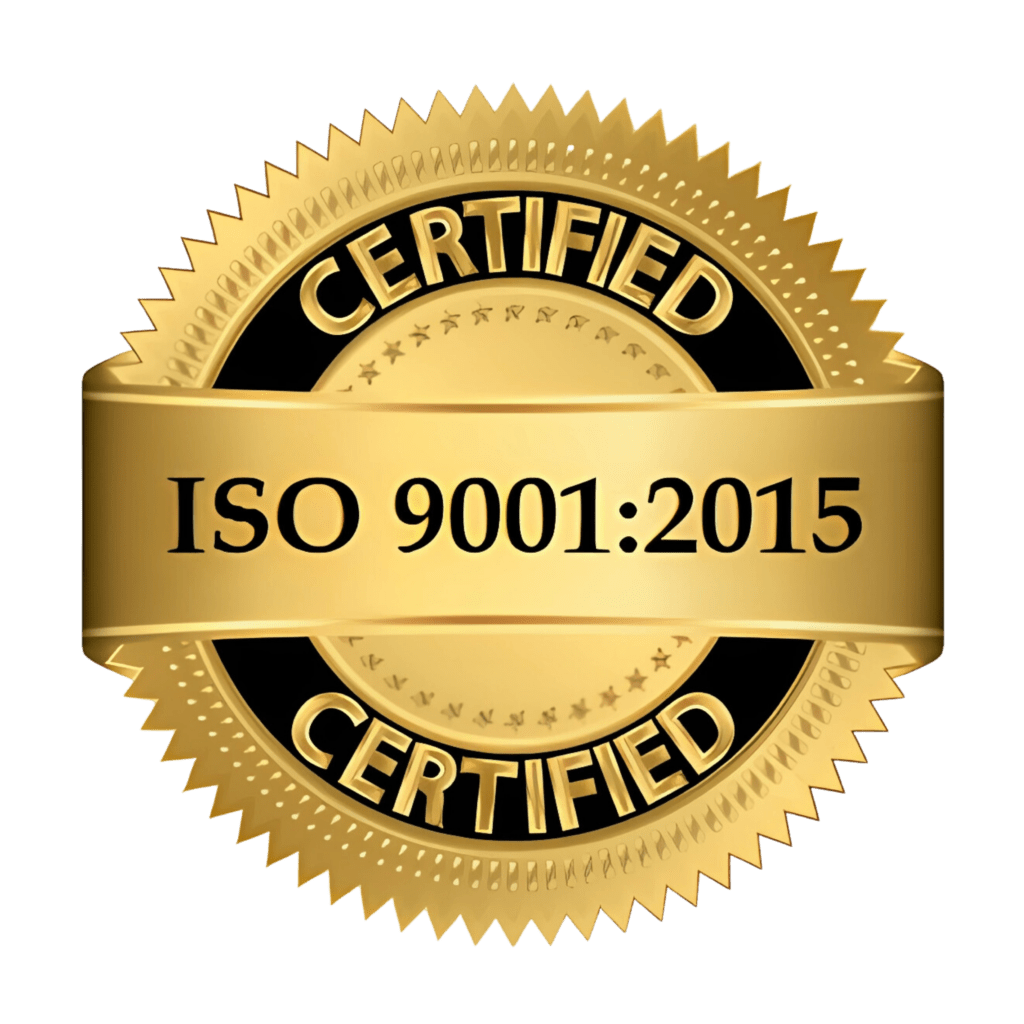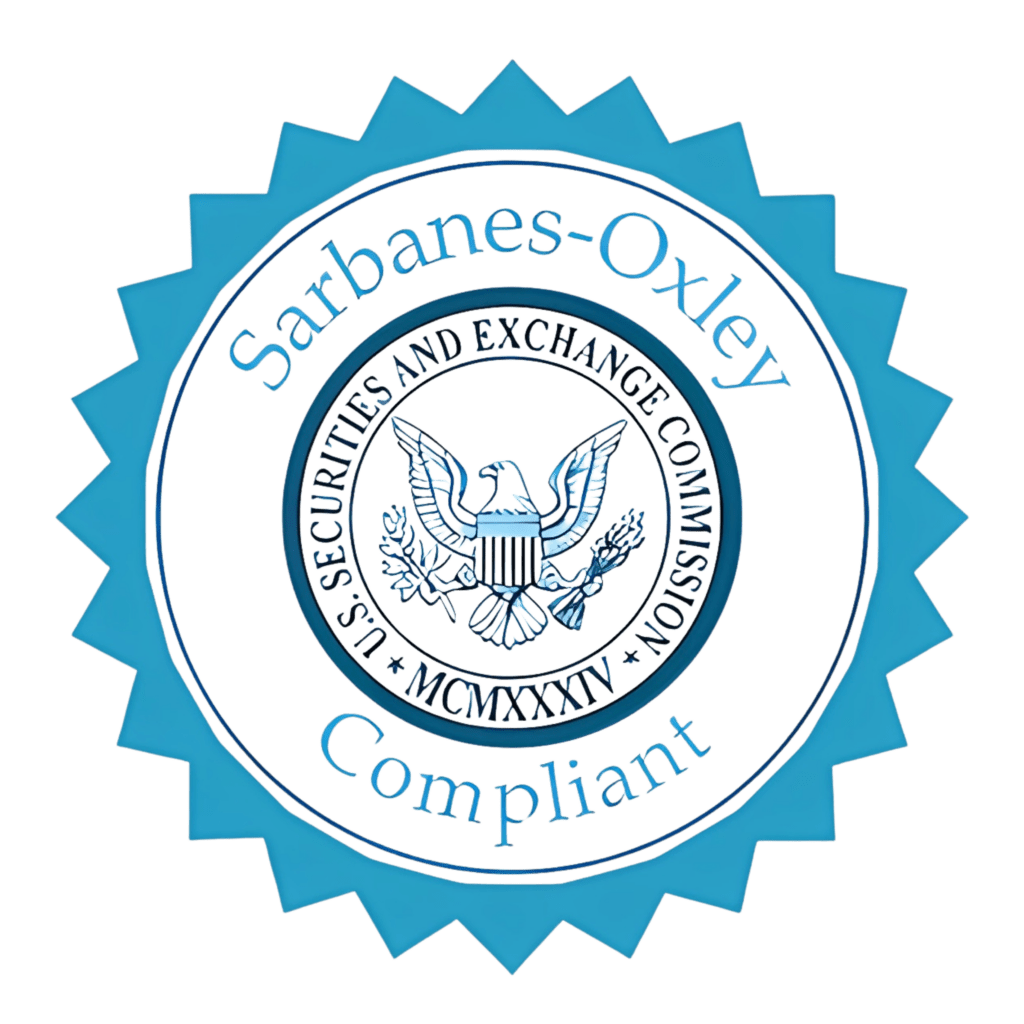If you are an entrepreneur, it is inevitable to file the Form 1120; misfiling it invites penalties that could reduce your profits and disrupt cash flow.
What makes Form 1120 so critical? It is the official document that U.S. corporations use to report income, deductions, and credits to the IRS. Filing it correctly is a legal requirement, and it impacts your corporation’s federal tax liability.
Understanding what Form 1120 is and how it works matters for these reasons:
- Compliance—Filing on time helps you stay in good standing with the IRS.
- Cost savings—Properly reporting deductions and credits can lower your tax bill.
Whether you’re running a startup, a small business structured as a C corporation, or a large enterprise, knowing the basic details of Form 1120 can save time and money on your tax liability.
Table of Contents
What Is Form 1120?
If you own a corporation in the U.S., this is the form that determines your annual tax bill to the IRS. Form 1120 is officially referred to as the U.S. Corporation Income Tax Return. It is the IRS form that corporations use to:
- Report gross income, capital gains, and other earnings.
- Claim business deductions like salaries, rent, advertising, and depreciation.
- Apply available tax credits.
- Calculate the corporation’s federal income tax liability.
The IRS uses Form 1120 to track corporate earnings and ensure that businesses pay their share of federal taxes. Unlike individuals who file Form 1040, corporations report their financial activity as separate taxable entities by filing Form 1120.
Who Must File Form 1120?
Not every business entity in the U.S. files the same tax return. Form 1120 is specifically designed for corporations, but it’s important to understand who must file Form 1120, or the kinds of corporations that have to file Form 1120.
Corporations Required to File Form 1120
1. C Corporations (Primary Filers)
All C corporations, from large enterprises to small incorporated businesses, are required to file IRS Form 1120 every year, even if they are not profitable or dormant.
2. LLCs Taxed as Corporations
Limited Liability Companies (LLCs) are pass-through entities under normal circumstances, but if an LLC elects to be recognized and taxed as a corporation by filing Form 8832 (Entity Classification Election), it must file Form 1120 instead of a partnership or disregarded entity return.
3. Foreign-Owned Domestic Corporations
If a U.S.-based corporation is fully or partially owned by foreign shareholders, it still must comply with U.S. tax law by filing Form 1120. These corporations may also have additional reporting obligations, such as Form 5472 (Information Return of a 25% Foreign-Owned U.S. Corporation).
4. Corporations with Zero Income or Losses
Business owners may assume that if a corporation has no activity or operates at a loss, it doesn’t need to file. However, the IRS requires Form 1120 to be filed annually, even for corporations reporting no income.
Who Does Not File Form 1120?
- S Corporations → File Form 1120-S, since their income passes through to shareholders’ personal tax returns.
- Partnerships → File Form 1065 (U.S. Return of Partnership Income).
- Sole Proprietors → Report the business income on Schedule C of the personal tax return (Form 1040).
Choosing the right tax form decides how your business is taxed. Filing the wrong form, such as using Form 1120 when you should be using Form 1120-S, can cause delays, penalties, and administrative issues. Working with a tax professional can help you comprehend the differences and reduce confusion.
Filing Deadlines and Extensions
One of the biggest mistakes corporations make is missing the deadline for Form 1120. The IRS is strict about corporate filing, and late submissions lead to steep penalties. Here’s what you need to know:
- Standard due date: For calendar-year corporations, Form 1120 is due by April 15 of the following year.
- Fiscal-year corporations: If your corporation doesn’t follow the calendar year, the return is due on the 15th day of the 4th month after the end of your fiscal year.
- Extensions: If you need more time, you can request an automatic six-month extension by filing Form 7004. However, remember this only extends your time to file—not your time to pay taxes due.
- State deadlines: Some states align with federal filing dates, while others have their own requirements. Always check your state’s tax agency for specifics.
- Weekends and holidays: If the deadline happens to be on a weekend or legal holiday, your filing is due the next business day.
Taxpayers often ask, “Where do I file Form 1120?” The IRS strongly encourages electronic filing, but paper filing is still an option. If you choose paper, where you mail Form 1120 depends on your corporation’s principal business location and whether you’re sending a payment with the return. The IRS even provides a list of mailing addresses in the official Form 1120 instructions, which change from time to time, so it’s best to double-check before sending.

Costs and Filing Methods
Many business owners also want to know about the cost and process of filing Form 1120. The answer varies based on some factors.
- Preparation costs: If you prepare the return yourself using tax software, the cost can be relatively low. Hiring a CPA or outsourcing to a tax compliance service is more expensive, but it helps ensure accuracy and reduces audit risk.
- E-filing vs. paper filing:
- E-filing: The IRS offers e-filing for corporations, which is faster, reduces errors, and provides confirmation of receipt. Many corporations prefer this method because it also reduces mailing delays.
- Paper filing: While still allowed, it’s slower and riskier. If you choose this route, you’ll need to know where to mail Form 1120, which depends on whether you’re including a payment. IRS mailing addresses differ by state and whether you’re enclosing a check.
- IRS e-file requirements: Large corporations with $10 million or more in assets and filing at least 250 returns a year are generally required to e-file Form 1120.
- Pros of e-filing: Faster processing, fewer mistakes, and peace of mind that the IRS received your return.
So, when business owners ask, “Where do I file Form 1120?” the most efficient and recommended answer is: file electronically through IRS e-file or approved tax software. Paper mailing is still an option, but it’s slower, and you’ll need to check the latest IRS mailing addresses.
Step-by-Step Walkthrough of Form 1120
Filing Form 1120 might seem daunting, as it’s several pages long and comes with multiple schedules. But once you break it down into sections, it’s much easier to understand. Here’s a simplified walkthrough:
1. Basic Information (Page 1, Header)
- Enter your corporation’s name, address, and Employer Identification Number (EIN).
- Provide your date of incorporation and total assets (from your balance sheet).
- Check the applicable box if this is your first return, a final return, or an amended return.
2. Income Section (Lines 1–11)
This is where you report all the money your corporation made during the year. It includes:
- Gross receipts or sales—total revenue before expenses.
- Dividends—income received from investments.
- Interest—earnings from interest-bearing accounts.
- Rents and royalties—if applicable.
- Capital gains—profits from selling assets.
- Other income—any additional revenue sources.
3. Deductions Section (Lines 12–29)
Deductions reduce your taxable income. Common ones include:
- Salaries and wages (excluding officer compensation, which is reported separately).
- Repairs and maintenance.
- Bad debts (uncollectible accounts).
- Rents (for office or equipment).
- Taxes and licenses.
- Advertising.
- Depreciation (claimed on Form 4562).
- Charitable contributions (subject to limits).
The IRS pays close attention here, so make sure deductions are legitimate and supported by documentation.
4. Tax and Payments (Lines 30–36)
Here’s where the math comes in:
- Taxable income = Total income – Deductions.
- Apply the flat corporate tax rate of 21% to calculate tax owed.
- Subtract tax credits (like R&D credits, foreign tax credits).
- The report estimated tax payments and credits made during the year.
- Calculate the balance due or refund owed.
5. Supporting Schedules (Attached Pages)
- Schedule C (Dividends and Special Deductions)—details of dividend income and deductions.
- Schedule J (Tax Computation and Payment)—summary of tax, credits, and payments.
- Schedule K (Other Information)—details like accounting method, business activity codes, and shareholder info.
- Schedule L (Balance Sheet per Books)—beginning and end-of-year assets, liabilities, and equity.
- Schedule M-1 (Reconciliation of Income)—explains differences between book income and taxable income.
- Schedule M-2 (Analysis of Unappropriated Retained Earnings) – shows changes in retained earnings.
6. Common Additional Forms Filed with Form 1120
Depending on your business activities, you might also need:
- Form 1125-A—to report Cost of Goods Sold (COGS).
- Form 1125-E—to report compensation of corporate officers.
- Form 4562—for depreciation and amortization.
- Form 3800—to claim general business credits.
7. Signature Section
- Finally, an officer of the corporation must sign and date the return.
- If a paid preparer (CPA or tax professional) completes the form, they must also sign it.
Even if your corporation didn’t generate income this year, you generally still need to file Form 1120. Filing a “zero return” helps you stay compliant and avoids IRS issues down the road.
Key Deductions and Credits Corporations Shouldn’t Miss
When preparing IRS Form 1120 (also known as the 1120 tax form), one of the smartest ways to lower your corporation’s tax bill is by taking advantage of deductions and credits. These can reduce your taxable income and minimize the 21% federal corporate tax rate.
Here are the most common deductions and credits you should not overlook:
1. Business Expenses
Ordinary and necessary expenses are deductible on Form 1120. These include:
- Salaries and wages paid to employees.
- Rent for office space, equipment, or business property.
- Insurance premiums, including liability and workers’ compensation.
- Utilities and office supplies are necessary to keep operations running.
2. Depreciation and Amortization
Corporations typically invest heavily in equipment, vehicles, or property. Instead of deducting the full cost upfront, you can spread the expense out over time through depreciation or amortization. These deductions are typically claimed using Form 4562 and reported directly on your 1120 tax form.
3. Research and Development (R&D) Credit
If your business invests in new products, technology, or processes, you may qualify for the R&D tax credit. This valuable credit directly reduces your tax liability rather than just lowering taxable income. Startups and tech-focused businesses should pay close attention to this opportunity.
4. Charitable Contributions
Corporations can deduct contributions made to qualifying charitable organizations. However, deductions are limited to 10% of taxable income (before taking into account certain deductions and credits). Any excess contributions can be carried forward up to five years.
5. Other Valuable Credits
- Foreign Tax Credit – if your corporation pays taxes to a foreign government.
- Energy Efficiency Credits – for investments in clean energy.
- General Business Credit – a collection of credits covering multiple business activities.
Maximizing deductions and credits is about saving money and about ensuring your corporation is taking advantage of every tax relief opportunity available under the law. When filing IRS Form 1120, every dollar deducted lowers the base used to calculate the 21% tax rate, directly reducing how much you owe.
Example: If your corporation earned $500,000 but can claim $100,000 in deductions, your taxable income drops to $400,000. At 21%, that means a $21,000 savings in federal taxes.
Penalties, Amended Returns, and Audit Risks
Filing Form 1120 accurately and on time is critical for corporations. The IRS imposes steep penalties and may even flag your return for an audit if things don’t add up. Understanding the risks and following the Form 1120 instructions carefully can save your business from unnecessary costs.
Penalties for Late Filing and Payment
- Late Filing Penalty: If you miss the deadline for filing Form 1120, the IRS charges 5% of the unpaid tax per month, up to a maximum of 25%. Even if you owe nothing, the IRS may still penalize late or missing returns.
- Late Payment Penalty: If you don’t pay the full amount owed by the due date, there’s an additional 0.5% penalty per month on the unpaid balance.
- Interest Accrual: Interest applies to any unpaid taxes, compounding the longer you wait. This is in addition to penalties, not instead of them.
Filing an Amended Return
Mistakes do happen. However, if you realize after filing that your corporation left out income, deductions, or credits, you’ll need to file an amended return using Form 1120-X. Following the official Form 1120 instructions ensures you file the amendment properly and avoid raising red flags with the IRS.
IRS Audit Risks
While not every corporation faces an audit, certain issues on Form 1120 increase the chances:
- High officer compensation: If executive salaries seem disproportionate to the size or earnings of the business.
- Unusual or excessive deductions: Large write-offs without clear documentation.
- Mismatch with third-party forms (like 1099s): If reported income doesn’t align with what clients or vendors reported to the IRS.
- Failure to reconcile retained earnings: Discrepancies between financial statements and tax returns.
Corporations that don’t follow Form 1120 instructions precisely risk IRS penalties and scrutiny. A late or incorrect filing can snowball into penalties, back taxes, and even a time-consuming audit. Proactive compliance keeps your corporation’s finances protected and gives peace of mind at tax time.

Conclusion
If you are an entrepreneur, you have to file Form 1120; misfiling it results in penalties that could reduce your profits and disrupt cash flow. It is the official document that U.S. corporations use to report income, deductions, and credits to the IRS. Form 1120 is specifically designed for corporations, but it’s important to understand exactly who must file Form 1120 and the procedure to file it. Understanding the risks and following the Form 1120 instructions carefully can save your business from unnecessary costs.
Profitjets is a trusted and preferred Tax Advisor and Tax consultant, where certified and experienced experts handle your tax strategy, Tax filing, and use all relevant deductions to manage your tax liability. We take pride in providing the end-to-end service from bookkeeping to taxation and even advisory services like Virtual CFO Services. The wide array of services we offer includes outsourced accounting and bookkeeping, outsourced bookkeeping for CPAs, tax filing and tax compliance services, and virtual CFO services. Get in touch with us so we can manage the filing of Form 1120 this tax season.
FAQs About IRS Form 1120
1. What is IRS Form 1120 used for?
IRS Form 1120—also called the U.S. Corporation Income Tax Return—is used by C corporations to report income, gains, losses, deductions, and credits. It also calculates the corporation’s federal income tax liability at the 21% corporate tax rate.
2. Who is required to file Form 1120?
Any C corporation operating in the U.S. must file Form 1120, even if it has no taxable income. LLCs that elect to be taxed as corporations and foreign-owned domestic corporations must also file. S corporations, partnerships, and sole proprietors do not use this form.
3. What is the deadline for Form 1120 in 2025?
For calendar-year corporations, the Form 1120 due date in 2025 is April 15, 2025. Fiscal-year corporations should file by the 15th day of the 4th month after their fiscal year ends. If the deadline happens to be on a weekend or holiday, the due date shifts to the next business day.
4. Can I file Form 1120 electronically?
Yes. The IRS allows corporations to e-file Form 1120, and many corporations with assets of $10 million or more are required to e-file. Electronic filing is faster, reduces errors, and provides immediate confirmation of receipt compared to paper filing.
5. What happens if I don’t file Form 1120?
Failing to file Form 1120 can result in:
– A late filing penalty of 5% per month (up to 25%).
– Late payment penalties of 0.5% per month on unpaid taxes.
– Accrued interest on the balance owed.
– Not filing also increases your risk of an IRS audit.
6. What’s the difference between Form 1120 and Form 1120-S?
– Form 1120: Used by C corporations, which pay taxes at the corporate level (leading to possible double taxation if dividends are paid).
– Form 1120-S: Used by S corporations, which are pass-through entities. Profits and losses flow directly to shareholders’ personal tax returns, avoiding double taxation.
7. How much does it cost to prepare Form 1120?
The cost of preparing Form 1120 varies depending on complexity:
– DIY software: $150–$400.
– CPA or tax professional: $600–$1,500+, depending on your business size, deductions, and state filing needs.
– Outsourced bookkeeping & tax compliance services: Often bundled for cost efficiency.
8. Do corporations with zero income need to file Form 1120?
Yes. Even corporations with no income, losses, or zero activity are still required to file Form 1120 annually in compliance with the IRS.
9. How do I amend Form 1120 if I made a mistake?
To correct an error after filing, submit Form 1120-X (Amended U.S. Corporation Income Tax Return). Be sure to include supporting documentation and follow the official Form 1120 instructions to avoid additional IRS inquiries.
10. What records should I keep after filing Form 1120 (and for how long)?
Corporations should keep all records that support income, deductions, and credits reported on Form 1120. This includes receipts, bank statements, payroll records, and depreciation schedules. The IRS recommends keeping these records for at least 7 years, though many tax professionals advise permanent storage of corporate tax returns.
11. What is Form 1120-F, and who needs to file it?
Form 1120-F is the U.S. Income Tax Return of a Foreign Corporation. Foreign corporations that earn income from U.S. sources, conduct business within the U.S., or have a U.S. office must file this form. Even if there is no taxable income, some foreign corporations are still required to submit Form 1120-F for compliance purposes.
12. What is Form 1120-H, and who uses it?
IRS Form 1120-H is the U.S. Income Tax Return for Homeowners Associations. Certain residential real estate management associations, condominium associations, or timeshare developments may file this form if at least 60% of their income comes from members’ dues and 90% of expenses are related to property maintenance. Filing Form 1120-H allows them to be taxed at a flat 30% rate on non-exempt income.










